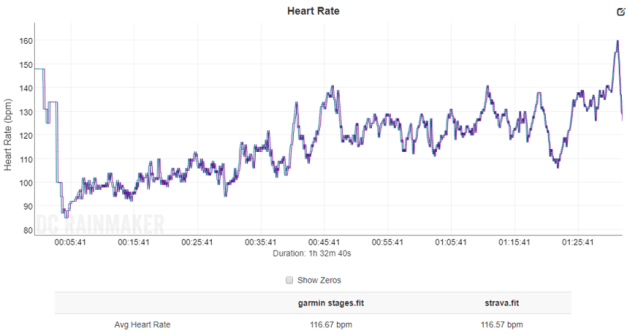Power meter with bike
8 mars 2020 Laisser un commentaire




Passion du sport: VTT, Ski, planche à voile, alpinisme, trail, course à pied
8 mars 2020 Laisser un commentaire




14 avril 2014 Laisser un commentaire
Voici une année 2014, qui se présente meilleure que 2013! Et les résultats de 2012 ne sont pas loin (quoique sur la partie Dev+…).
Bilan entre le 1er janvier et le 15 avril de chaque année.
La préparation de la saison doit donc continuer.
| 2012 | 2013 | 2014 | |
| Compteur d’activités | 34 | 17 | 26 |
| Distance | 609.67 km | 283.32 km | 539.41 km |
| Temps h:m:s | 71:56:08 | 37:19:54 | 53:01:30 |
| Gain d’altitude | 30,097 m | 9,188 m | 17,791 m |
| Vitesse moy. | 8.5 km/h | 7.6 km/h | 10.2 km/h |
| FC moy. | 125 bpm | 127 bpm | 130 bpm |
| Cadence de course moy. | 83 ppm | 79 ppm | 79 ppm |
| Cadence de vélo moy. | 51 tr/min | 61 tr/min | 70 tr/min |
| Calories | 31,997 C | 16,978 C | 19,990 C |
14 avril 2014 Laisser un commentaire
Et voilà, trouvé sur le net:
Here is what I did. I went to my calendar in GC (http://connect.garmin.com/calendar) and clicked on the button link in the top right corner and selected Publish Calendar. In the dialog box that popped up, I right-clicked on the highlighted URL and clicked Copy to copy it. I then opened a new tab and pasted the URL in the address bar. When I hit return, I was prompted to Open or Save the file. I saved it to my desktop; any location you’re going to remember is good.
With the file saved, I opened my Google Calendar, clicked the down arrow next to My Calendars (left side of page, half way down), and clicked Settings. On the Settings page, there is a link entitled Import Calendar. I clicked that and in the dialog box that popped up I hit the Choose File button and navigated to the saved .ics file, and selected the destination calendar (if you have more than one). Once I hit the import button, I had the entries in Google Calendar after a few seconds.
Just about every calendar I’ve seen has an import function. You may need to fish around to find it. I just tried it in Outlook 2010 (File | Open | Import) and it worked flawlessly.
20 Mai 2012 Laisser un commentaire
Sortie longue avec Frédéric. L’objecctif était d’avancer dans la préparation de la saison, en prévision notamment de la Freetrail et de la transvésubienne. C’était un parcours test. Le coeur est pas trop mal, avec un temps limité au-dessus de 160 et les jambes tournent bien. Il faut encore travailler la puissance, mais le retard d’entrainement sur la saison précédente se comble.